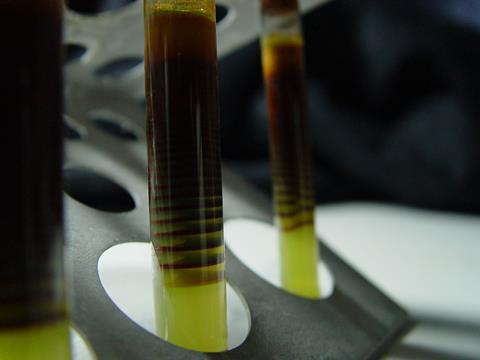Emma Davies explores how unravelling the complex mechanisms of the body clock has led to some fascinating discoveries and a 2017 Nobel prize

Scientists knew that living organisms had internal clocks centuries before they began to understand them. In 1729, French astronomer Jean Jacques d’Ortous de Mairan placed a mimosa tree in the dark and noted that the leaves still opened and closed as if it were outside, suggesting an in-built rhythm. Then, in 1955, Max Renner from the Ludwig-Maximilian University of Munich, Germany, demonstrated an in-built system in bees. He trained Parisian bees by providing food at the same time each day. He then transported them to New York, keeping a light on them all the time. The bees stuck to their Parisian time despite jumping time zones.
The body’s daily rhythm is described as ‘circadian’, from the Latin words circa (around) and diem (day). Circadian rhythms exist in all multi-cellular organisms, including fungi, plants, insects, and humans, as well as single-celled cyanobacteria. The systems consist of a 24-hour rhythm generator – otherwise known as an oscillator or clock.
Anyone who has had jet lag will know how strongly our body clocks govern us
The rhythm-generating oscillator system is infinitely better than a photoreceptor system because it can anticipate the rising and setting of the sun, rather than react to it, says Andrew Millar from the University of Edinburgh, UK. Photoreceptors are neurons in the retina that react when the sun appears to convert the light into signals that stimulate biological processes. But, a nocturnal rodent in its burrow needs to anticipate when darkness will fall – emerging too early could prove fatal.
The way that plants use an oscillator system was demonstrated by an experiment in which mustard plants used energy set aside in daylight during the hours of darkness; they used stored energy at a faster rate and grew more during short summer nights than long winter ones. ‘It’s a typical example of how an oscillator can be used to gain an advantage that a photoreceptor just responding to light or darkness could not achieve,’ says Andrew.
Chemists may be surprised by the fact that the clock’s pace doesn’t change as the temperature increases in the warmer months – it stays at 24 hours. ‘This is unusual as most oscillating chemical reactions speed up as the temperature increases,’ he adds, such as the Belousov–Zhabotinsky reaction in which the ratio of concentrations of cerium(IV) and cerium(III) ions oscillate, causing the colour of the solution to oscillate between a yellow solution and a colourless solution.
Health and the body clock

Anyone who has had jet lag will know how strongly our body clocks govern us. Not only do the clocks help to regulate sleep patterns and feeding behaviour, they are also linked to hormone release, blood pressure, and body temperature.
Disrupting the body clock over long periods is associated with many diseases, such as type II diabetes, cancer and cardiovascular disease. Those with neurodegenerative disorders, such as Parkinson’s and Alzheimer’s, tend to see their circadian rhythms deteriorate, which can accelerate disease progression. ‘All chronic ageing-related diseases seem to be more prevalent in individuals where there has been a circadian disruption,’ says John O’Neill from the MRC Laboratory of Molecular Biology in Cambridge, UK. ‘If you have consistently worked shifts, you are more than twice as likely – as a woman – to have breast cancer.’
Crucially, many medicines’ efficacy depends on the time of day at which they are taken. Australian doctors noted that statins are only really effective if taken just before bedtime because the liver enzyme they inhibit, which helps to synthesise cholesterol, is mainly active at night. And, in his chronotherapy studies coordinating cancer medication with circadian rhythms, Francis Lévi at the University of Warwick, UK, noticed that the effectiveness and toxicity of chemotherapy varied depending on when it was administered.
However, synchronising medication to the circadian clock is easier said than done because individuals have different rhythms. This is made more complicated by the fact that patients suffering from lack of sleep, possibly through their illness, can have a disrupted biological clock.
So, there is a strong impetus to unravel the body clock’s complex mechanisms.
Nobel prize for clock genes
Many trace circadian research progress to a now-famous US Cold Spring Harbor symposium in 1960, which was set up as a ‘unifying influence on the entire field of study’. There, 150 leaders reported finding the same properties across all organisms. However, the mechanisms remained elusive. At the time, the idea of isolating single genes that could modulate the biological clock was ‘considered a completely wacky hypothesis’, says John. However, by the late 1960s, the chronobiology community was well established, and the idea of clock genes emerged.
The story of the clock’s deconstruction has many twists and turns and is not yet finished. Advances are such that Jeffrey Hall and Michael Rosbash of Brandeis University, US, and Michael Young of The Rockefeller University, US, were awarded the 2017 Nobel prize in physiology or medicine for their work in identifying clock genes and understanding the mechanisms.

The foundations for the Nobel discoveries were laid in 1971. Neuroscientist Seymour Benzer and his student Ronald Konopka from the California Institute of Technology, US, looked for fruit flies with circadian mutations, identifying three different strains with a short cycle of 19 hours, a long one of about 28 hours, or no rhythm at all. Mapping experiments using genetic markers showed that all three mutants came from the same region of the X chromosome. Further tests suggested that they were all linked to the same gene, later called ‘period’.
A decade later, Jeffrey, Michael and Michael cloned and sequenced the period gene. Yet there was still no mechanism. The key lay in a protein that the gene encodes called PER. Jeffrey and Michael Rosbash made a breakthrough with their discovery that PER levels in fly brain neurons peak at night. They suggested that a build-up of PER stopped cells making more.
‘In broad terms, the function of the clock gene called period is to turn off its own expression,’ explains Andrew. ‘It works with several other components that the prize-winning labs were critical in identifying, and the process of turning itself off takes 24 hours.’ He describes the process as an unusual negative feedback loop. ‘The crucial point is that in the clocks, the negative feedback has a delay. The individual processes involved could all be pretty fast. Other genes turn themselves off within tens of minutes. In the clock, it takes tens of hours.’
Michael Young then discovered another gene influencing the circadian clock called ‘timeless’, which encodes a TIM protein. In a string of discoveries, Michael’s laboratory found that TIM could bind directly to PER and move to the nucleus, effectively turning off the period gene until dawn.
The negative feedback loop is seen in plants and other organisms, but the identity of the clock genes differs. Clock genes are conserved across all animals, but are quite different in plants and different again in fungi, says Andrew. ‘So that suggests that evolution solved the problem of anticipating the day/night cycle multiple times. And the solution in plants involved different proteins.’
In 2004, researchers at the Howard Hughes Medical Institute, US, found evidence of circadian rhythms of gene activity in isolated mouse cells. Then Steve Brown from the University of Geneva, Switzerland, measured circadian rhythms in isolated human skin cells kept either in constant darkness or light. The 24-hour activity cycles continued in all cells without any external cues, with genes being turned on or off and metabolic processes remaining active.
The idea of every cell having its own clock marked a huge leap and researchers scrambled to figure out how to fit all the pieces together. It was found that each clock centres on a control system in a part of the brain called the hypothalamus. Curt Richter at Johns Hopkins University, US, discovered that cutting out small sections from the hypothalamus disrupted circadian rhythms. The region, known as the suprachiasmatic nucleus (SCN), consists of around 20,000 neurons, is the same in all mammals, and coordinates circadian rhythms in the whole organism. Specialised cells in the retinas send day and night messages to the SCN, which is why those unfortunate enough to lose their sight can have rhythms that lose sync with the outside world.

For a long time, the SCN was considered to be the only clock in the body, but we now think of it as the master clock, says John. ‘It communicates with each individual cell in the body, telling them what time of day it is, but your actual circadian rhythm and physiology depend on what the individual clocks in each cell are doing every day.’
This discovery explains why jet lag can be so debilitating. The master clock, which can only change by 1–2 hours each day, has to adapt to a new time zone first, before the rest of the body can catch up.
Different strokes
What is not celebrated by the Nobel prize is the fact there is an alternative way to build a 24-hour oscillator, says Andrew. Cyanobacteria have a clock that does not need genetic activity: Takao Kondo from Nagoya University in Japan showed that three cyanobacterial proteins – and the energy source adenosine triphosphate (ATP) – produced a 24-hour rhythm in a test tube. Unfortunately, the proteins don’t exist in other organisms, but the ‘work did challenge the paradigm,’ says Andrew, and it led John, who did his PhD in Andrew’s lab, to find similar results in marine algae.
Later, working with Akhilesh Reddy from the University of Cambridge, UK, John also found that human red blood cells, which have no nucleus and therefore no DNA, oxidise and reduce proteins in a 24-hour cycle.
John thinks that evolution may have conserved an enzymatic timing mechanism. ‘We see the same enzymes again and again even though the clock proteins are not conserved,’ he says. His team is currently testing the enzymatic processes that are not only important to circadian timekeeping in mammalian cells but are also conserved through evolution. ‘We hope that if we can work out a minimal set of components that you need in a human cell to be able to express circadian rhythms then, hopefully, we should be able to reconstitute that timekeeping mechanism in a test tube. Just as was done for cyanobacteria,’ he says.
With many possible avenues to follow, John is determined to stay focused on the enzymes. But, as he points out, ‘everything is interesting; there are so many questions.’
Emma Davies is a science writer based in Bishop’s Stortford, UK
The Royal Society of Chemistry’s Learn Chemistry platform has instructions for carrying out the Belousov–Zhabotinsky reaction in the classroom










No comments yet